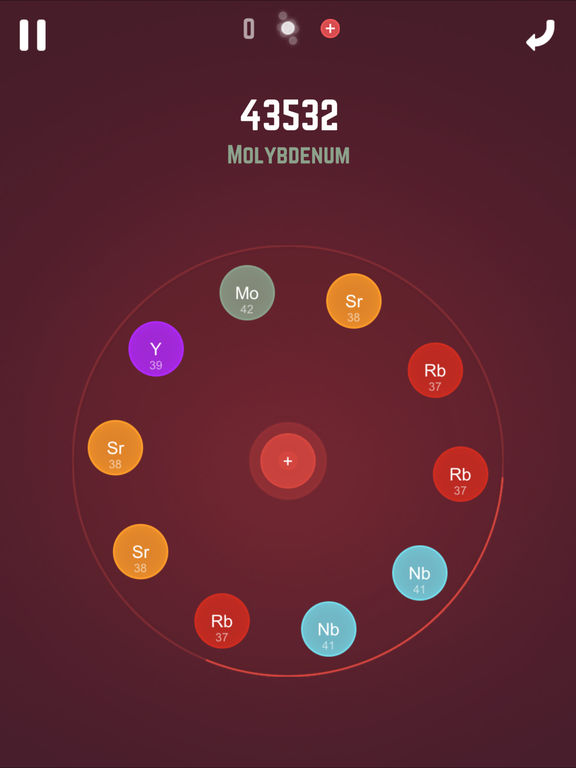

Once the circle is completely full of elements, and there is no room for new ones, the game is over. The (-) icon can be used to move an element into a different position, or transform it into a (+) icon. If you create a symmetrical pattern of elements, and then place the (+) at the center you can combine multiples. The (+) icon can be placed between two matching elements to combine them, but you can combine more than just two at a time. You can tap anywhere in the circle to place the new element in that spot.


At the center of that circle is another random element, or a (+) or (-) icon. A few random elements are arranged in a circle. The goal is to get the element with the highest atomic number you can before the board gets too crowded. For example, when you combine two Lithium atoms (3) you’ll get one Beryllium (4). Every element has an atomic number, and when combined they create the element with the next higher atomic number. To play Atomas you have to combine matching elements. Anyone can pick it up in just a few seconds. The good news is you don’t have to be physicist or chemist to understand this game. All you have to start with is a hydrogen atom, but in no time at all you’ll be creating bigger and better things. Your job is to create valuable elements such as gold, platinum, and silver. Science can be really fun, and games like Atomas drive that point home.Ītomas, by Sirnic, is a puzzle game that uses scientific elements. More and more people are realizing that science doesn’t have to be some old dudes in white lab coats. That stereotype has started to change in the last few years. Science is typically seen as one of those subjects that only “nerdy people” enjoy.


 0 kommentar(er)
0 kommentar(er)
